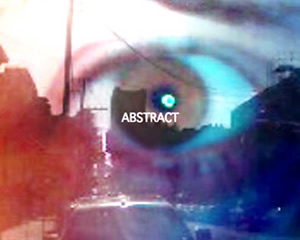Archive 2008-09
Matthew Noel Tod

- Venue: Fine Art Lecture Theatre
- Start: Wed, 29 Apr 2009 11:00:00 BST
- End: Wed, 29 Apr 2009 13:00:00 BST
Noel-Tod's impressionistic and abstracted diary video, Nausea (2005), for example, makes links to On Kawara's insistent but minimalist date paintings. The execution of Noel-Tod's videos, meanwhile, is informed by cinema history and an intuitive cinematic sensibility. Obcy Aktorzy / Foreign Actors (2006) is essentially an ethnography of Polish cinema, articulated in the same medium as its subject and crafted through quotation and montage.
Noel-Tod straddles two giant bodies of reference – art and cinema – through his interest in and application of technology. He explores the particularities of his chosen medium, whether it be a cathode ray tube camera (used in Obcy Aktorzy / Foreign Actors) or a mobile phone camera (Nausea). Atomic (2003) presents his remake of the Blondie pop video, looped and accompanied by music written for F.W. Murnau's Nosferatu (1922). Atomic emerged from Noel-Tod's interest in exploring the origins of new technologies – such as early cinema and video – but also his more reflexive interest in the nature and end points of different forms of mediation.
These videos always employ some kind of pre-existing element. The quotes – always referencing form as well as content – cleverly retain an element of their original emotional impact while pointing to evidence of deconstruction. Through their combinations of sequences, and often with superimposed text, the videos also take on enumerable new poetic nuances. Consequently, Noel-Tod's videos exist in a kind of entropic state. There is at once absolute break down, but through the agency of the viewer there is also the potential for a radical new unity. Significantly, the work lies on this threshold, incomplete without such intervention but always pointing to it.